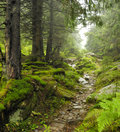|
This past discussion led me to take a look at concrete creation. Never really thought much about how concrete was made, about how CO2 intensive the process is...
|
|
|
|

|
| # ? May 19, 2024 19:22 |
|
crazypenguin posted:However, looking at their numbers, they rely on biomass a lot to actually achieve this. I'm not sure I'd want to? Perhaps this is covered later in the paper, but it seems to me that if we don't use biomass, then we'd be effectively sequestering some of that carbon, which would be nice. Depends on which kind of biomass we're talking about. Landfills are huge emitters of carbon and carbon-equivalents and so is ag waste. Basically waste biomass will decompose and release carbon-equivalents, the question is, is it worth capturing and using? For big cities I bet so, especially since it can be additional dispatchable capacity. Edit: looks like the NREL study is using mostly waste biomass and 27% from dedicated biomass crops to get to a 100GW theoretical max capacity for the US in 2050. Growth in biofuels would also increase available waste biomass for electricity generation if that occurs. Also the other factor to consider is, biomass is only effectively sequestering carbon as long as that biomass doesn't decompose. So its easier economically to plant biomass for power (which will be close to carbon neutral) versus planting biomass for sequestration and then never getting to use that land again for any other purpose. And if you combine waste biomass plants with CCS, you can actually divert carbon and end up with a net-negative carbon footprint. Trabisnikof fucked around with this message at 22:30 on Oct 23, 2014 |
|
|
|
crazypenguin posted:And 60% probably doesn't need grid storage yet! I was surprised when I discovered this, but it turns out you can push it up to somewhere around that point and compensate for variability by just adjusting output from other sources. It's actually... easy. The output is so predictable, you have enough time to adjust even coal, nevermind natural gas. It's only when you want to push it higher that the variability becomes a real problem and you need storage. That's gotta be some goddamn magical forecasting, because Germany is having problems right now with variable wind output right now and they're at like 10% generation. And that's ignoring the fact that the variable output of other power plants isn't cheap either. You still have a coal power plant staffed and running, only now it's intentionally working at reduced capacity, and probably reduced efficiency too. The only way 60% wind seems feasible is with either dramatic overcapacity, and the associated overpricing, or a huge tolerance for variable output on the consumer side, i.e. brownouts and blackouts. I love wind power, and I'm thrilled that wind turbines have been built in view of my town, but without some advance to smooth outputs I can't see it as a good idea for more than about 5% of the grid.
|
|
|
|
Dilb posted:Germany is having problems right now with variable wind output right now and they're at like 10% generation. ... Again: Iowa. 27%. As a basic sanity check, if you think that's impossible, you're wrong about something. And... read that article more carefully. You're talking about brownouts and the need for "dramatic overcapacity" but the article is talking about wind farms producing too much energy. The problems are pretty much the opposite of what you think they are. Until, that is, you get up to about 60% or so. That's when those things actually do start to be problems. quote:And that's ignoring the fact that the variable output of other power plants isn't cheap either. You still have a coal power plant staffed and running, only now it's intentionally working at reduced capacity, and probably reduced efficiency too. Oh you're absolutely right there. That's why Iowa wants to improve its infrastructure to sell power to neighboring states: it makes more economic sense to keep those plants running and sell long distance than to spin them down a bit. For now.
|
|
|
|
Dilb posted:That's gotta be some goddamn magical forecasting, because Germany is having problems right now with variable wind output right now and they're at like 10% generation. Germany's grid issues has to do with priority loading rules. That is, Germany's grid operators are required to accept power from wind turbines preferentially. So that's forcing the Eastern European to use their old grid. As the article you linked points out, it is the fact that the grid in Eastern Europe is so old combined with wind forcing coal plants offline during peak-wind times that is risking grid stability for the Eastern European operators. A huge cost of larger renewable rollout will be in grid improvements, which is something that not enough renewables advocates discuss, but has a lot of co-benefits to it. This is a really interesting point, that I wouldn't have thought about since our grids are so much larger in the US: quote:The German-Austrian common marketís physical transmission capacity doesnít correspond with the volume of transactions between the two countries, so they end up using the Czech, Polish, Slovak and Hungarian grids, Boldis said. The four countries want Germany and Austria to redraw the power-trading map, creating smaller areas that would better reflect electricity flows. Dilb posted:And that's ignoring the fact that the variable output of other power plants isn't cheap either. You still have a coal power plant staffed and running, only now it's intentionally working at reduced capacity, and probably reduced efficiency too. Or Biomass, or pumped hydro, or natural gas peaker, etc. Plus, wind/solar forecasting is dramatically improving which combined with larger farm sizes means more accurate power scheduling and reduced need for bringing peakers online. Texas's grid is a great example of one changing from an old base-load model as renewables grow. Dilb posted:The only way 60% wind seems feasible is with either dramatic overcapacity, and the associated overpricing, or a huge tolerance for variable output on the consumer side, i.e. brownouts and blackouts. I love wind power, and I'm thrilled that wind turbines have been built in view of my town, but without some advance to smooth outputs I can't see it as a good idea for more than about 5% of the grid. Well, the model that the all renewables by 2050 Stanford paper I cited called for ~31% onshore wind, ~19% offshore wind, and that paper is as aggressively renewables as one can be. That paper also calls for 2.7TW of total wind nameplate capacity and with capacity factors for onshore wind of 35.2% and for offshore wind for 42.5%. Obviously, going to the all renewables side of the equation is the high-land use option and there is a value trade off to be discussed there. The thing is, almost any proposal someone brings up in this thread is better than the status quo because coal sucks so bad. We could pay for a huge chunk of any alternative system just from the savings to healthcare from stopping the US from burning coal. Trabisnikof fucked around with this message at 00:48 on Oct 24, 2014 |
|
|
crazypenguin posted:And... read that article more carefully. You're talking about brownouts and the need for "dramatic overcapacity" but the article is talking about wind farms producing too much energy. The problems are pretty much the opposite of what you think they are. Solar and wind producing too much energy is peak generation. Peak generation is useless if it can't be controlled or at least stored.
|
|
|
|
|
Lurking Haro posted:Solar and wind producing too much energy is peak generation. Peak generation is useless if it can't be controlled or at least stored. Right but the issue is German regulation requiring the grid to take the wind energy and shut off the coal plants, which is effecting other countries' grids more than its effecting Germany's, at least according to that Bloomburg article.
|
|
|
|
Lurking Haro posted:Solar and wind producing too much energy is peak generation. Peak generation is useless if it can't be controlled or at least stored. It can be controlled. You can spin down other sources, or transmit it elsewhere to other buyers. Right now the economic incentive is to transmit, but that runs into issues with poor grid infrastructure. So the problem most grid operators are experiencing is that the incentives for all parties are a bit unaligned, and that puts the pressure on them.
|
|
|
|
crazypenguin posted:Again: Iowa. 27%. As a basic sanity check, if you think that's impossible, you're wrong about something. I wasn't aware Iowa had it's own self-contained grid, and would love to read more about that. crazypenguin posted:And... read that article more carefully. You're talking about brownouts and the need for "dramatic overcapacity" but the article is talking about wind farms producing too much energy. The problems are pretty much the opposite of what you think they are. Too much energy is the same thing as overcapacity. Germany is 'dealing' with it's surplus-at-times wind power by selling it to people for dirt cheap, or even paying them to take it away (while at the same time paying wind operators massive feed-in tariffs). That tells you something about just how easy it is for existing power plants to deal with variable outputs. If everyone is on wind then the only way to deal with surplus is to turn off wind plants, which pushes their capacity-factor down and thus the average price of wind up. If you don't have overcapacity, then you won't have enough power at all those times when you're producing below average wind power.
|
|
|
|
Iowa producing 27% of their power from wind looks great on paper. But they are... Iowa. Their largest city doesn't crack the top 100 cities in the US. I could have sworn there was a statistic floating around that the max theoretical electric output of wind is less than 1/10th of what the world currently uses.
|
|
|
|
Given the difficulties in utilizing solar/wind as a baseload (limited dispatchability, required over-capacity, lack of grid-level storage), why attempt to utilize it as such? It seems like instead of moving heaven and earth to make a variable power source provide constant power, utilize it specifically for variable applications or applications where our energy storage technology meets the intended service?
|
|
|
|
Nevvy Z posted:Iowa producing 27% of their power from wind looks great on paper. But they are... Iowa. Their largest city doesn't crack the top 100 cities in the US. I could have sworn there was a statistic floating around that the max theoretical electric output of wind is less than 1/10th of what the world currently uses. Reading around on it, it seems Iowa wind is largely based on selling power to Chicago. They are currently trying to improve the grid so they can sell more, but that means working with other states as they don't run their own grid. The theoretical power from wind is way higher, though. Like 100 times current world usage if you don't do anything large-scale enough to mess up the climate.
|
|
|
|
If Iowa produces 27% of its in-state electrical production by wind, that's about 4325 megawatts of generating capacity. That's 1.8x the output of the old PSEG Salem Generating Station nuclear facility in southern New Jersey, and that runs with much less variability. So basically, Iowa ain't producing much electricity by wind. Pander posted:Given the difficulties in utilizing solar/wind as a baseload (limited dispatchability, required over-capacity, lack of grid-level storage), why attempt to utilize it as such? It seems like instead of moving heaven and earth to make a variable power source provide constant power, utilize it specifically for variable applications or applications where our energy storage technology meets the intended service? Lots of actual installations do do that. It's not uncommon to see minor wind installations on the premises of a certain company or public installation whose primary function is to cut into grid power bills. For example, the wastewater treatment facility for Atlantic City has 5 wind turbines on attached land. During normal conditions, the wind turbines provide about 50% of the facility's electrical needs (since most of the time the facility sells half of the rest of the power to the grid at a premium).
|
|
|
|
By the way, look at an estimate of a week of pumped storage for the US. tl;dr: There would need to be enough reservoirs to drain Lake Erie, with the ridiculous amounts of concrete for building the reservoirs that implies. Anyway, even discounting storage, wind and solar still require more concrete (and steel) inputs than nuclear. crazypenguin posted:Again: Iowa. 27%. As a basic sanity check, if you think that's impossible, you're wrong about something. That's only possible because Iowa produces a tiny fraction of the power in the national grid. Having to dump electricity into neighbouring areas or feather wind turbines at peak times is the very definition of overcapacity. e: having no neighbouring areas able to accept extra electricity because they're also using wind power is where problems start. By the way, Germany is in the process of shooting ourselves in the foot: the Suedlink powerlines supposed to connect Northern German wind power to Southern German consumers who will soon be lacking nuclear power stations are facing resistance... because of NIMBY-ism and people insisting on a ~decentralised~ ~local~ renewable development suck my woke dick fucked around with this message at 08:06 on Oct 24, 2014 |
|
|
|
Ultimately, I think "5%" of total production is a bit of an absurd limit to wind production considering we are at 4.67% already, which means we pretty much need to stop most wind construction at the moment because we have "too much of it." Obviously there needs to be a balance here, but it needs to be reasonable. Texas is a very large state, and almost 10% of its electricity production is from wind. Ardennes fucked around with this message at 09:57 on Oct 24, 2014 |
|
|
|
The Nordic market isn't representative of anything you can do on a global scale since there's vast natural resources here simply by virtue of area to population but it's at least a positive story. Reuters posted:Wind blows away fossil power in the Nordics, the Baltics next http://www.reuters.com/article/2014/10/15/nordicpower-windfarm-idUSL6N0S530M20141015
|
|
|
Ardennes posted:Ultimately, I think "5%" of total production is a bit of an absurd limit to wind production considering we are at 4.67% already, which means we pretty much need to stop most wind construction at the moment because we have "too much of it." Obviously there needs to be a balance here, but it needs to be reasonable. My department gets tons of guest lecturers who focus on grid control, energy markets, renewables, microgrids, etc. I've asked almost all of them where they thing the optimal renewable capacity is (the capacity at which you get diminishing returns) with existing grid infrastructure and most answers are around %10-15, highest I ever heard was %20. One neat idea that's been brought up is to rely on a huge fleet of electric vehicles as a grid storage mechanism. So long as an EV is plugged into a charging station, it can exchange energy with the grid in both directions, and has basically no limits on response times. They estimated that if you had half a million EVs (along with a very sophisticated control) you could basically flatline power generation during the min and max demand hours. The downside of course is that you'd need half a million EVs, and using the EVs as grid storage would likely kill their battery life.
|
|
|
|
|
ANIME AKBAR posted:One neat idea that's been brought up is to rely on a huge fleet of electric vehicles as a grid storage mechanism. So long as an EV is plugged into a charging station, it can exchange energy with the grid in both directions, and has basically no limits on response times. They estimated that if you had half a million EVs (along with a very sophisticated control) you could basically flatline power generation during the min and max demand hours. The downside of course is that you'd need half a million EVs, and using the EVs as grid storage would likely kill their battery life. I wonder if utilities could make deals with data centers, hospitals, or anyone else who has (or could benefit from) a bunch of large UPSs sitting around to provide discounted power in exchange from drawing from those batteries at peak. Or is the scale too small to be comparable to a fleet of electric cars? e: Interesting, it seems like data centers already use their UPSs to reduce the amount of peak power they draw to save on costs. Same benefit, and a lot less complex to manage. http://static.googleusercontent.com/media/research.google.com/en/us/pubs/archive/39964.pdf AreWeDrunkYet fucked around with this message at 14:29 on Oct 24, 2014 |
|
|
|
ANIME AKBAR posted:My department gets tons of guest lecturers who focus on grid control, energy markets, renewables, microgrids, etc. I've asked almost all of them where they thing the optimal renewable capacity is (the capacity at which you get diminishing returns) with existing grid infrastructure and most answers are around %10-15, highest I ever heard was %20. Well I guess it depends on what you call renewable, Hydro, geothermal and biomass include? I could see the point of around 15-20% with sources prone to variability, that said it would still take time to get to those levels and we could be upgrading how our grid works in the mean time. If you say wind and solar is going to be 20% max, nuclear is 20% and hydro/geothermal/biomass are around 10%, at least you are half way there. It would be at least a start, obviously if we also had robust growth in nuclear it would increase the headroom much higher. That said it doesn't fix China, who has talked a lot about nuclear and renewables, reliance on coal has been a steady 78-80% of generation from 2004 to 2013. The 3 Gorges Dam really only kept the numbers stable rather than shift them very much. Current electrical output from nuclear is a 1.7% with a hope of 4% by 2020 compared to 20% in the US currently. It is unclear with the greater possibility of a crisis in China that those plans will hold either.
|
|
|
Ardennes posted:Well I guess it depends on what you call renewable, Hydro, geothermal and biomass include? quote:I could see the point of around 15-20% with sources prone to variability, that said it would still take time to get to those levels and we could be upgrading how our grid works in the mean time. If you say wind and solar is going to be 20% max, nuclear is 20% and hydro/geothermal/biomass are around 10%, at least you are half way there. It would be at least a start, obviously if we also had robust growth in nuclear it would increase the headroom much higher.
|
|
|
|
|
ANIME AKBAR posted:When I said renewables I meant solar and wind combined, my bad. Hydro is generally easy to deal with and should always be used when available. Biomass is an incredibly vague category which includes literally burning down forests, so I don't factor it in unless you get into the details of what it is. Biomass can be controversial but it seems like there is a push that it should be counted because of a relatively short carbon cycle. I am not wedded to defending it and ultimately it makes up around 1%. quote:Nuclear alone could probably take up all the baseline slack itself. And that wouldn't require reforming the entire grid. As discussed earlier though, Nuclear is very much a political nonstarter and at best we are going to be lucky to tread water. As far as politically possible solutions it seems like Wind with grid improvements is a much easier path to navigate at this point, especially since Wind has quite a bit of momentum behind it. Ultimately, the major non-carbon sources will likely have to be some combination of wind, hydro and nuclear with everything else on the side.
|
|
|
|
Biomass is concerning because all of those "80% renewable by 20xx!" plans seem to involve large amounts of biomass. May as well start counting clean coal if you're doing that.
|
|
|
|
hobbesmaster posted:Biomass is concerning because all of those "80% renewable by 20xx!" plans seem to involve large amounts of biomass. May as well start counting clean coal if you're doing that. I don't see why that's a problem as long as you're planting trees at a sustainable replacement rate, though. I know that the nordic countries at least have been doing a lot of work on this sort of thing, and I don't see why it couldn't work there. Of course, it helps that Sweden isn't so much a country as a giant slab of boreal forest with a few small hamlets scattered among the trees, but still.
|
|
|
|
LemonDrizzle posted:I don't see why that's a problem as long as you're planting trees at a sustainable replacement rate, though. I know that the nordic countries at least have been doing a lot of work on this sort of thing, and I don't see why it couldn't work there. Of course, it helps that Sweden isn't so much a country as a giant slab of boreal forest with a few small hamlets scattered among the trees, but still. Because that CO2 is still going into the atmosphere! If you're sequestering it you may as well just use coal and gas and not waste our farm lands.
|
|
|
|
hobbesmaster posted:Because that CO2 is still going into the atmosphere! If you're sequestering it you may as well just use coal and gas and not waste our farm lands. Wouldn't sequestration of coal/gas emissions by planting trees be more wasteful of land than just planting and periodically harvesting biomass crops, though? In the former case, you theoretically have infinitely growing land requirements whereas in the latter you require a fixed area of land for sustainable operation. In the Nordic context, at least, energy crop cultivation doesn't really come at the expense of arable land because they already have vast tracts of forest that aren't really used for much of anything. I agree that biomass is dumb in any country where you have a high population density or agricultural land is at a premium, but there are specific situations where it seems like a reasonable option.
|
|
|
ANIME AKBAR posted:My department gets tons of guest lecturers who focus on grid control, energy markets, renewables, microgrids, etc. I've asked almost all of them where they thing the optimal renewable capacity is (the capacity at which you get diminishing returns) with existing grid infrastructure and most answers are around %10-15, highest I ever heard was %20. Charging those EVs afterwards would likely cause a peak as well. Nice, charging EVs with EVs. I'd prefer building a slight overcapacity and using it outside of peak to do non-time-critical stuff like desalination or chemical CO2 sequestration.
|
|
|
|
|
Building a new nuclear plant on land gets people all NIMBYish, but no one seems to mind that the Navy is still building reactors on a regular basis. Couldn't they take some of their existing reactor designs and put a bunch of them on barges off the coast to provide power? Stick five of the reactors the Nimitzes use on there, and you've basically got the output of a standard US nuclear plant.
|
|
|
|
People would freak out if the Government actually built powerplants and probably raise a huge stink. Also the Republicans would do everything to torpedo it. The plan, not the barges themselves.
|
|
|
|
AreWeDrunkYet posted:Building a new nuclear plant on land gets people all NIMBYish, but no one seems to mind that the Navy is still building reactors on a regular basis. Couldn't they take some of their existing reactor designs and put a bunch of them on barges off the coast to provide power? Stick five of the reactors the Nimitzes use on there, and you've basically got the output of a standard US nuclear plant. Naval reactors aren't exactly designed to produce economical electricity. For one thing, they require metallic uranium that's enriched to a considerably higher degree than civilian plants (the stuff in US naval reactors is basically bomb-grade, if you got your hands on some you could build a gun-type bomb without much difficulty), because they want to extend the duration between refueling. And they almost certainly don't meet the regulatory requirements for civilian plants. Killer-of-Lawyers posted:People would freak out if the Government actually built powerplants and probably raise a huge stink. Also the Republicans would do everything to torpedo it. It's the *Republicans* who hate nuclear power now? Phanatic fucked around with this message at 16:22 on Oct 24, 2014 |
|
|
|
Phanatic posted:It's the *Republicans* who hate nuclear power now? Well if Obama comes up with the plan then they'd hate it. 
|
|
|
|
AreWeDrunkYet posted:Building a new nuclear plant on land gets people all NIMBYish, but no one seems to mind that the Navy is still building reactors on a regular basis. Couldn't they take some of their existing reactor designs and put a bunch of them on barges off the coast to provide power? Stick five of the reactors the Nimitzes use on there, and you've basically got the output of a standard US nuclear plant. While I was in the Navy and spent some time on a nuke sub, I wasn't a naval nuke myself, so I can't answer authoritatively. But my best guess is that the energy you get out of a ship's reactor will be far less beneficial per unit space than a standard land reactor. Plus, while the mobility of ships is great for US Navy uses, it would be a disadvantage when the real possibility exists that hurricanes might require your power source to pull up anchor and get out of dodge for a week. Plus, each ship would probably require its own complement of O&M personnel, which is a huge expense even at land reactors where multi-unit facilities enable a degree of efficiency in staffing. There are a myriad of other small benefits. Not using seawater for cooling is nice, cause seawater is hell. Better security options, since you don't need to worry about any terrorists parking a boat loaded with explosives near yours. Greater allowance for redundant safety systems, since size isn't as much an issue. Better working conditions for personnel. ^-- e. what phantic said.
|
|
|
|
Phanatic posted:Naval reactors aren't exactly designed to produce economical electricity. For one thing, they require metallic uranium that's enriched to a considerably higher degree than civilian plants (the stuff in US naval reactors is basically bomb-grade, if you got your hands on some you could build a gun-type bomb without much difficulty), because they want to extend the duration between refueling. And they almost certainly don't meet the regulatory requirements for civilian plants. No, but they'd hate the idea of the government building something a business should be instead, which is what it's about. I know plenty of people here who would howl bloody murder at the idea of the government building power plants. Doesn't matter what runs them.
|
|
|
|
Killer-of-Lawyers posted:No, but they'd hate the idea of the government building something a business should be instead, which is what it's about. I know plenty of people here who would howl bloody murder at the idea of the government building power plants. Doesn't matter what runs them. Oh come on, the reactors would be built by westinghouse, the ship would be built by northrop and it'd be run by some utility spread throughout as many congressional districts as possible. "The government" wouldn't build a thing, they'd just hand out cash.
|
|
|
|
I understand that floating naval reactors are clearly less efficient than civilian land-based options while presenting other difficulties, but public discourse just seems less toxic when it comes to military-based socialism. Build them under the pretense of trusting the patriots of the armed forces to provide security against the terror threat to the existing power infrastructure, whatever works. How much less efficient is it though? Is there any way to estimate a cost per megawatt hour, or is military accounting too opaque?
|
|
|
|
Phanatic posted:It's the *Republicans* who hate nuclear power now? The old-style pool of rock-rib Republicans who stumped for nuclear has shrunk incredibly, and what little attention they would give tends toward an overarching argument against regulation than an argument in favor of nuclear in particular. So yeah. Like I said above, the current group most in favor of nuclear power in America tends toward very engineering-minded moderates from any party. I'm not saying that to immediately dismiss political ideologues as incapable of considering the problem from an engineering perspective, but just that the large-scale negative political and emotional movement against nuclear tends to only be overcome when effort is taken to understand how nuclear power actually works and how America gets its energy in general. I've converted a number of people I know to adopting a more understanding attitude toward nuclear, and it almost always involves a technical discussion of what nuclear power is and isn't as an opener.
|
|
|
|
AreWeDrunkYet posted:I understand that floating naval reactors are clearly less efficient than civilian land-based options while presenting other difficulties, but public discourse just seems less toxic when it comes to military-based socialism. Build them under the pretense of trusting the patriots of the armed forces to provide security against the terror threat to the existing power infrastructure, whatever works. Public discourse is also less toxic about the military bombing people than it would be about private businesses bombing people. The military can 'get away' with stuff the private sector cannot because of its unique mission and responsibilities. Building specialized reactors to power ships to stay underwater or at sea independently for months at a time is part of the Navy's mission parameters, and as a result only a very few (Greenpeace, etc) raise a stink about it. Designing them from the get-go to replace a private industry function, rather than serve a unique military purpose, would completely change the public discourse, and basically reintroduce nimbyism. Regarding efficiency: I think typical ship reactors are on the scale of about 20-30 MWe. It would take about 30-50 ships to replace one typical land nuclear power plant. Most of these ships cost on the order of billions. So the cost would be at LEAST a factor of 5 higher, and probably closer to 10 to 20. It would be expensive and problematic, to say the least. That's not to say it's not done. Russia is looking into floating nuclear plants. It already does it on an infrequent basis with nuclear icebreaker ships. However, these are limited deployments to remote areas in some of the coldest parts of the world. It is not an industrial-scale strategy.
|
|
|
|
Pander posted:Regarding efficiency: I think typical ship reactors are on the scale of about 20-30 MWe. It would take about 30-50 ships to replace one typical land nuclear power plant. Most of these ships cost on the order of billions. So the cost would be at LEAST a factor of 5 higher, and probably closer to 10 to 20. http://en.wikipedia.org/wiki/A4W_reactor Is MWth a substantially different measurement than MWe? 550 each is well on the way to industrial scale generation. I would also assume that a lot of those costs come from making it a functioning warship that could be skimped on if power is the focus. Hate to keep relying on Wikipedia, but from here- http://en.wikipedia.org/wiki/Watts_Bar_Nuclear_Generating_Station It looks like getting 1 GW of modern nuclear generation costs about $4-4.5b. The George H.W. Bush, with similar generation capacity, came in at $6.2b. Strip off the runways, guns, lodging for 5000 people, etc, etc, and I don't see why the cost wouldn't be competitive.
|
|
|
|
Killer-of-Lawyers posted:No, but they'd hate the idea of the government building something a business should be instead, which is what it's about. I know plenty of people here who would howl bloody murder at the idea of the government building power plants. Doesn't matter what runs them. Are you theory-politicking on behalf of the Bad Guys or do you have evidence here? Energy is highly regulated in most states, it's often provided by a government-sponsored monopoly and has strict price controls. The states in which it is the most deregulated tend to be ones that vote democrat, for what it's worth. (Not claiming any causation there.)
|
|
|
|
AreWeDrunkYet posted:http://en.wikipedia.org/wiki/A4W_reactor MWe = MWth * thermal-to-electrical efficiency, Considering that that's about 30% with current turbines, I'd say that's rather a big difference.
|
|
|
|

|
| # ? May 19, 2024 19:22 |
|
hobbesmaster posted:Because that CO2 is still going into the atmosphere! If you're sequestering it you may as well just use coal and gas and not waste our farm lands. The main reason coal et all is bad is that you're introducing new CO2 into the cycle. With something like biomass you're not adding anything into the atmosphere that hasn't been there within the past century or so (a pretty short time frame for the big picture). The same problems still apply for using farmland though.
|
|
|












 I CANNOT EJACULATE WITHOUT SEEING NATIVE AMERICANS BRUTALISED!
I CANNOT EJACULATE WITHOUT SEEING NATIVE AMERICANS BRUTALISED!








